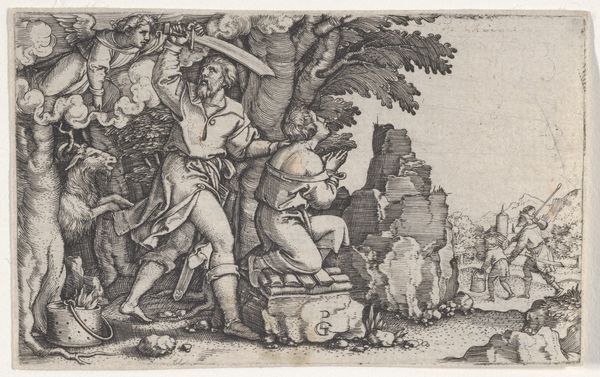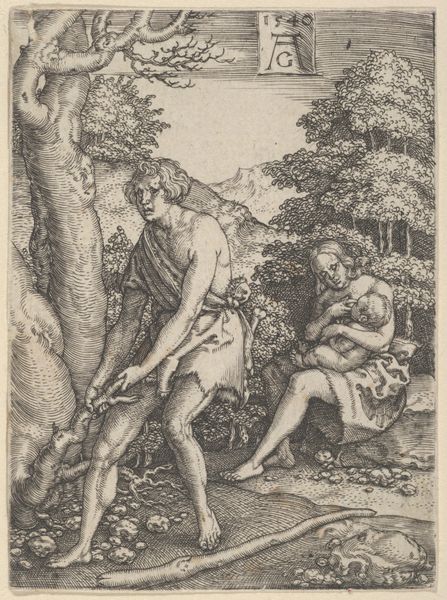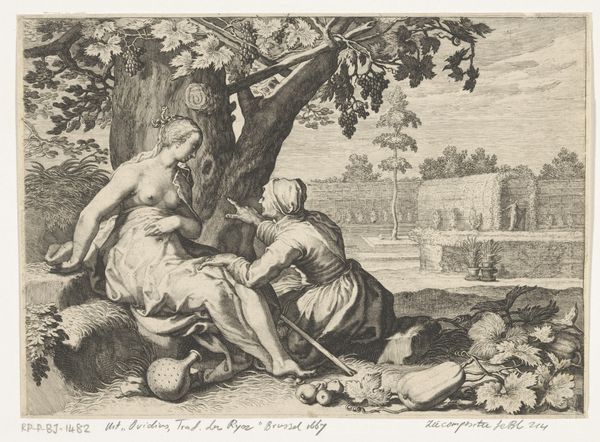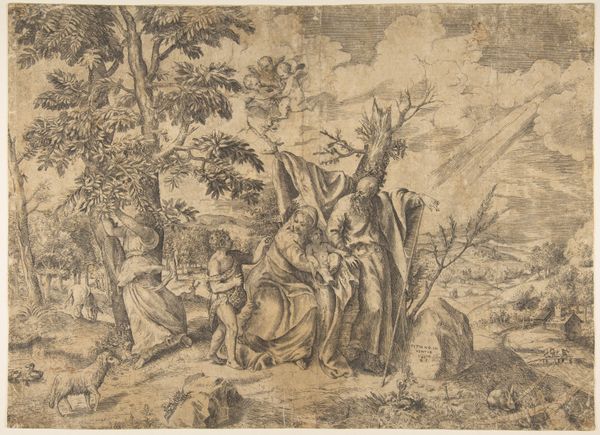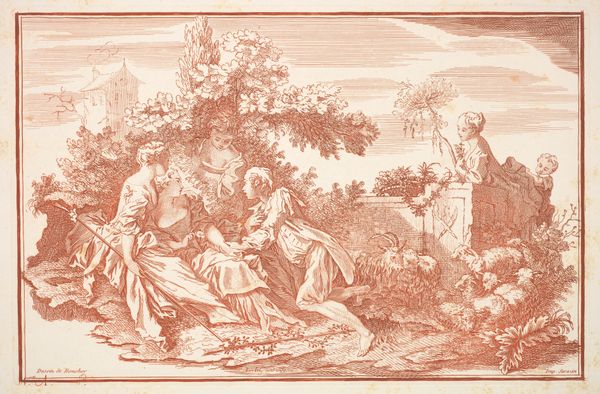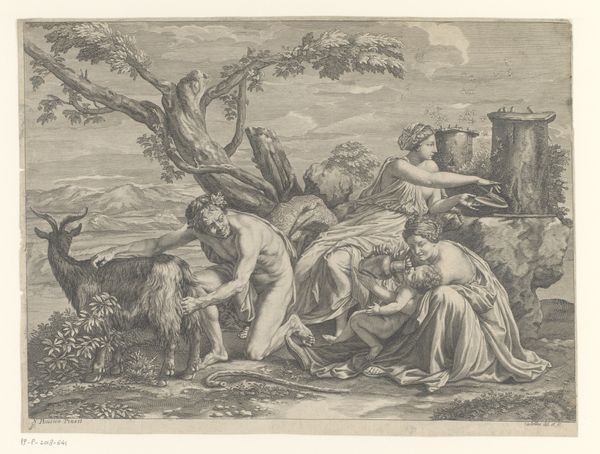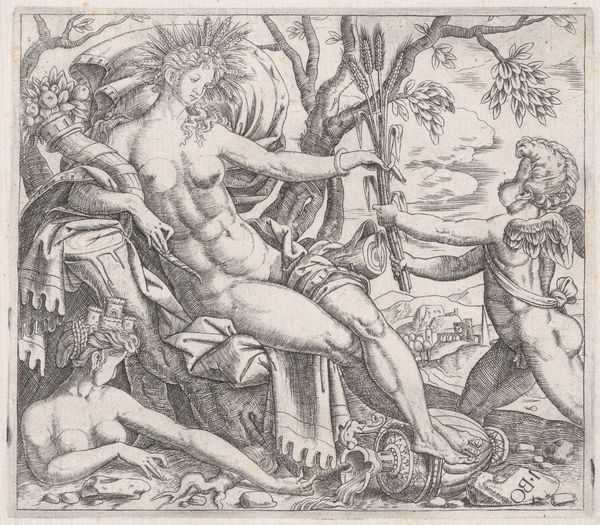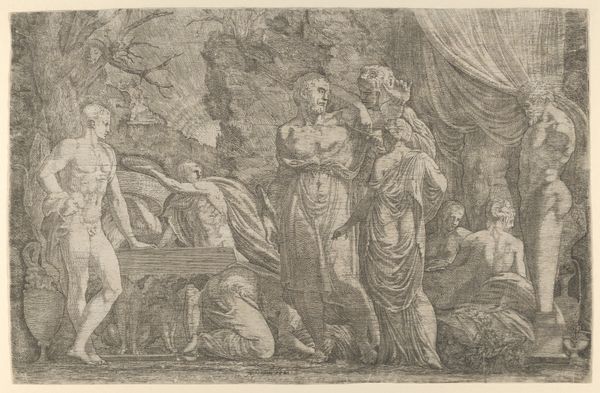
Angelica and Medoro; they stand next to a stream as Medoro carves their names into a tree, a putto is seated at left with a torch and another putto walks towards them with a goat 1590 - 1598
0:00
0:00
drawing, print, engraving
#
drawing
#
allegory
#
baroque
# print
#
old engraving style
#
landscape
#
figuration
#
engraving
Dimensions: Sheet (Trimmed): 12 1/2 × 16 3/8 in. (31.8 × 41.6 cm)
Copyright: Public Domain
Curator: This is "Angelica and Medoro" by Aegidius Sadeler II, a print made sometime between 1590 and 1598. It's a lovely example of late Mannerist or early Baroque engraving. Editor: It definitely has that elaborate, detailed feel. Angelica and Medoro seem so absorbed in their moment of carving their names. It feels like a stage setting, or a dream. What draws your eye when you look at this piece? Curator: My focus is immediately drawn to the act of inscription. Carving their names into the tree is a potent symbol. Do you see the putto with the extinguished torch nearby? Editor: Yes, now that you mention it! What does the extinguished torch mean? Curator: The extinguished torch often symbolizes the end of life or the fading of earthly love, suggesting mortality but placed next to an expression of enduring remembrance through inscription, there's a juxtaposition occurring here, isn’t there? We see a kind of eternalizing through art, fighting death’s oblivion, as though love's record can endure, can defy decay through this carving. Consider how civilizations leave records of their presence – not only buildings, but texts – scratched or engraved – consider Egyptian hieroglyphs, cave paintings in France! The inscription acts as proof. Proof of feeling, proof of existence, a fight against nothingness. Editor: Wow, I hadn't considered how timeless that symbol of inscription is. It gives the image a much deeper meaning. I thought it was simply about romance! Curator: It’s always more than just the surface. Visual symbols speak volumes, carrying emotional and cultural significance through time, offering glimpses into humanity's persistent attempts to leave its mark. It’s like a continuous echo through culture and time. Editor: That really changes my perception of the whole artwork. Thanks for opening my eyes!
Comments
No comments
Be the first to comment and join the conversation on the ultimate creative platform.


